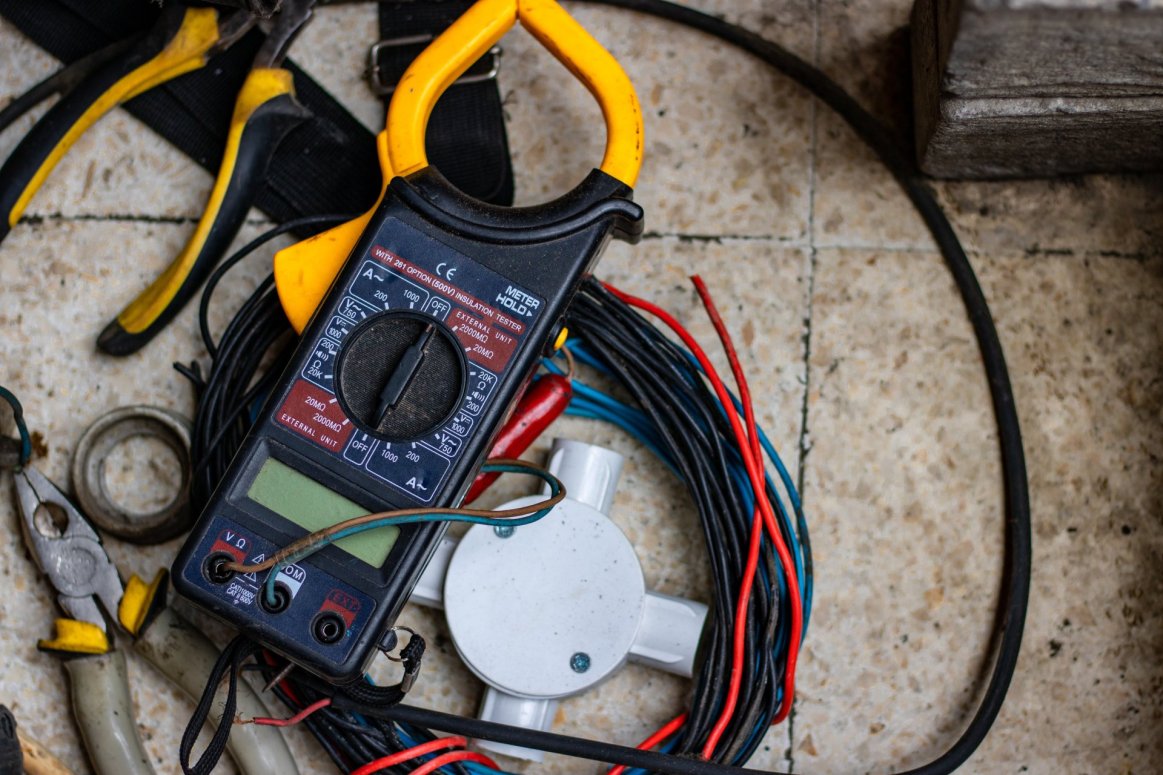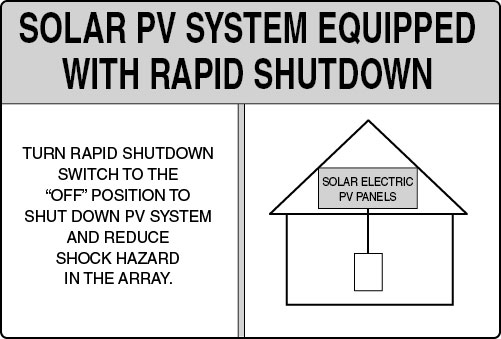
Every three years, the National Fire Protection Association (NFPA) publishes an updated National Electrical Code (NEC). As electricians, journeymen, and PV installers are intimately aware, the details of this code are as ever-shifting as the energy industry itself. To help solar installers understand the NEC updates most pertinent to the PV business, Greentech Renewables has compiled critical guidance, requirements, and general information surrounding electrical safety and photovoltaic technology.
The NEC is no stranger to those working in the energy field. However, the standards set by the NEC are not enacted by federal law but by state and local jurisdictions, varying in each state, county, and sometimes even town. Thus, solar installers in one state often must adhere to different code requirements than installers in another. Anyone working in PV must understand local code before an installation project can begin; see below for a map of states that uphold either the 2020 or 2023 NEC.
The 2023 NEC contains many updates pertaining less directly to the business of solar installers. These updates include electrical guidance on horticultural lighting fixtures, assisted living culinary provisions, bidet wiring, air conditioners outside of traditional residential units, and more. For the purposes of this article, these non-topical, yet still important, updates will be passed over.
GENERAL UPDATES
There are several general updates to the 2023 NEC that all electricians and solar installers should follow. For example, household electrical devices, particularly kitchen appliances, are now universally expected to meet increased protection standards. However, every NEC update may not impact the solar business, so the list below covers general updates pertinent to solar installers. More information about general updates in the NEC 2023 is available here.
- 110.26A (4) requires a 24 in. - 78 in. space between electrical devices with doors and nearby objects. A safe path must be accessible if the door is open.
- 22.57 requires that electric vehicle supply equipment (EVSE) load calculations are measured at 7200 watts (volt-amperes) or the equipment rating (whichever is greater).
- 220.70 expands the language surrounding maximum current safety to include digital energy management systems.
- 511.7 enables installers to utilize metal conduit and electrical tubing in scenarios where electrical equipment lays on hazardous sites.
- 555.15 indicates that enclosure, device, or wiring modifications must be checked by a qualified individual such as an inspector. Further, only a qualified individual may perform repairs on this equipment if damaged.
- 625.50 states that EV charging systems rated over 16 A/120 V must connect through their branch circuit. Exceptions arise in the presence of multiple EV chargers or an energy management system.
- 625.49 establishes standards for EV power export and bidirectional equipment, a relatively new emerging technology in the renewable energy market.
PV-RELATED UPDATES
Ground Fault Circuit Interrupters
The 2023 NEC includes new scenarios which require ground fault circuit interrupters (GFCIs), including common solar installer job sites. GFCIs are crucial safety equipment pieces and have been common in outdoor electrical work since the 1970s. Recent NEC rounds have begun to require this type of electrical protection in basements and areas at risk for excessive moisture.
- The 2023 update includes that GFCIs are required in garage outlets rated below 50 amps and grounded outlets rated under 150V (Section 210.8 F). Further, article 406.4 (D3) now requires that all GFCIs be certified by an OSHA testing lab (UL, CSA, etc.). Solar installers who work with garages or outdoor accessory buildings should take these updates into account.
Solar Photovoltaic (PV) Systems
The 2023 NFPA updates language depicting system components and technical concepts in Article 690, possibly the most relevant NEC article for solar installers. The list below includes language changes relevant to solar installers.
- The article makes several linguistic changes as the phrase ‘PV output circuit’ has been removed from the code. For example, section 690.7 (A) now refers to the ‘PV string circuit’ to better specify which type of output the code references.
- The code adds a new section (F) to article 690.4, which now includes ‘floatovoltaics’ or solar arrays that float on bodies of water. The addition requires solar installers working with this type of array to consider wiring methods that account for unexpected movement of the equipment.
- Article 690.4 updates to specify language that includes ‘AC modules and AC module systems’ in listed equipment. The purpose of this language shift is to mitigate confusion around AC modules’ inclusion in the articles’ requirements.
- Section 690.7 (D) combines with a previously separate section to require labeling at the disconnecting means, power conversion equipment, or distribution equipment associated with the PV system. This language now lists all appropriate label locations in one place.
- Article 690.12 (D) removes specific coloring and reflective requirements for product labels. Inspectors should no longer hold systems accountable for these labels’ aesthetics but focus more on their content and accessibility. Labels are, however, still required to use a text color that contrasts with its background color.
- 691.4 (2) removes requirements for large-scale PV electric supply stations to use fencing for restriction. This change likely comes in tandem with increasing restrictions on equipment accessibility, thus loosening requirements to protect an entire supply station using a fence, etc.
Wiring
Part IV of article 690, which pertains to wiring methods, sees significant updates from the 2020 edition of the NEC.
- Part IV is revised to include subsections and topics that promote clarity and understanding. 690.31(A) is now split into ‘Serviceability,’ ‘Where Readily Accessible,’ ‘Conductor Ampacity,’ and ‘Special Equipment.’
- Additionally, 690.31(C)(2) evolves to include guidance for single conductor wires under a gauge of 1/0 AWG in cable trays.
- 690.31 (G) is a new section that includes requirements for PV system DC circuits with a maximum voltage above 1000 V. Systems of these magnitudes may not be installed on one or two-family dwellings, may not contain wiring in buildings with habitable rooms, and must be located within 10 feet above grade.
Energy Storage Systems
Article 706 of the 2023 NEC covers the rapidly developing energy storage sector. The list below includes storage updates relevant to solar work.
- 706.7 (A) is a new article that delves into the commissioning and maintenance processes of energy storage systems, particularly those of a larger scale. These systems are now required to undergo the commissioning process upon installation.
- 706.7 (B) adds that one must keep a maintenance log regarding all records of upkeep on the system. The same exception for one or two-family dwellings applies.
- Multiple sections now address energy storage disconnecting means. 706.15 (B) establishes location and control details, and the NEC now requires emergency shutdown for one or two family dwellings. Further, section (E) of this article addresses disconnecting means for batteries, outlining the approved locations for overprotection devices, exceptions, and notification requirements.
Rapid Shutdown Systems
Greentech Renewables recently published this overview on Rapid Shutdown Device (RSD) requirements across 2011, 2014, 2017, and 2020 NEC editions. This updated version of the NEC makes several developments regarding RSD.
- Although this edition alters some sections regarding rapid shutdown device requirements, the technology is still present throughout article 690. 690.12 (D) now houses label specifications for buildings with PV systems. See the text requirements in the label presented below.

- Section 690.12 incorporates an exception to the requirement for rapid shutdown devices that mentions arrays detached from buildings that terminate on an exterior structure. These systems may consider passing on RSD if preferred.
- Section 690.12 considers solar arrays on non-enclosed detached structures; this may look like a covered picnic structure, a backyard shade structure, or a carport. These types of installations can now generally avoid RSD requirements.
HOW TO ACCESS THE FULL NEC
Anyone can purchase the full National Electrical Code in its physical form online. Many resources allow solar installers, inspectors, and other professionals to gain a deeper understanding of these standards, such as workbooks, info sheets, exams, and more. SEI also offers an in-depth, 4.5 hour training on 2023 NEC updates for solar and storage which is accessible on their training site. In addition, the NFPA makes the NEC chapters virtually accessible with a 14-day free trial in its NFPA LiNK; LiNK enables its users to explore the code in depth without buying the physical book.
As always, the Greentech Renewables’ Design Services team can support your journey in elevating your solar business. If you have any questions regarding the 2023 NEC on the PV industry, leave a comment below or connect with a location near you today.